An army of sheep led by a lion is better than an army of lions led by a sheep
Type: Singleplayer, Multiplayer
Genre: Strategy
Developer: Paradox Development Studio
Publisher: Paradox Interactive
Release date: 16 Feb, 2021


That quote is supposedly by Alexander the Great, though there’s no actually evidence of him ever saying that, but since when has lack of evidence ever stopped someone from attributing a quote to someone? In either case, this DLC is not about Alexander the Great, but the successor kingdoms he left behind. Alexander conquered a vast amount of territory during his short reign, from Egypt and Anatolia through present day Iran and up to the borders of India, and upon his death the land that he conquered split into several smaller nations, all vying for power.
For those who have followed Paradox releases for a while the format of this DLC should seem familiar. Their Content Packs or immersion packs (names can vary from game to game) are small DLCs that mostly gives a specific region a bit more flavour, and they also tend to have one or two minor things that are relevant for those not playing in that region. Heirs of Alexander is not an exception, it adds new mission trees and new events to the successor kingdoms, and also Great wonders, which anyone who can afford them can build. Launching alongside Heirs of Alexander is also the Marius Update, which is pretty much an overhaul of the game. This review is not really about that update, but the DLC itself.
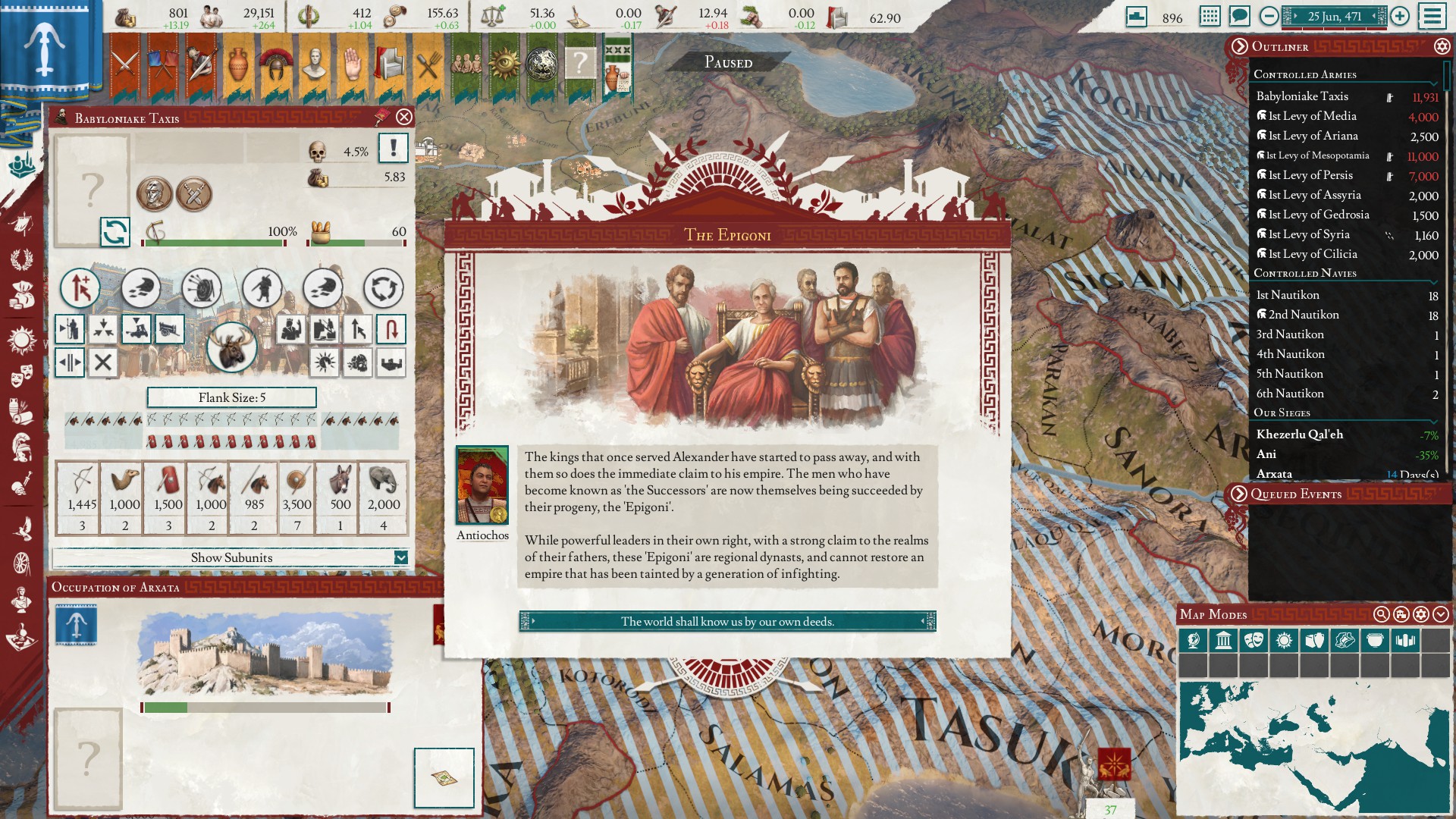
New Quests for Old Nations
The main selling point of this DLC is the new quests and events for several nations. Egypt, Thrace, Macedon, the Seleukid(/Seleucid) Empire and the Antigonid Kingdom all got brand new mission trees befitting such important powers.
The mission trees do of course work like those of other nations, and are basically a series of objectives which, when you’ve accomplished them, give you some kind of bonus. The objectives range from conquering specific territories to improving life in your kingdom to building up a lot of wealth. There’s a good amount of variety here and the objectives make sense, both from a historical and a gameplay point of view. Thrace might never have gone so far as to conquer Scythia historically, but the mission tree that leads to that outcome has a logical progression where you subjugate the “barbarian” nations to the north that historically did threaten Thrace, and if they had gone down that route it would have made sense for them to have kept pushing north. The mission trees also usually has several branching parallel paths, and these branches can be mutually exclusive, you can’t after all both befriend and conquer a nation at the same time.
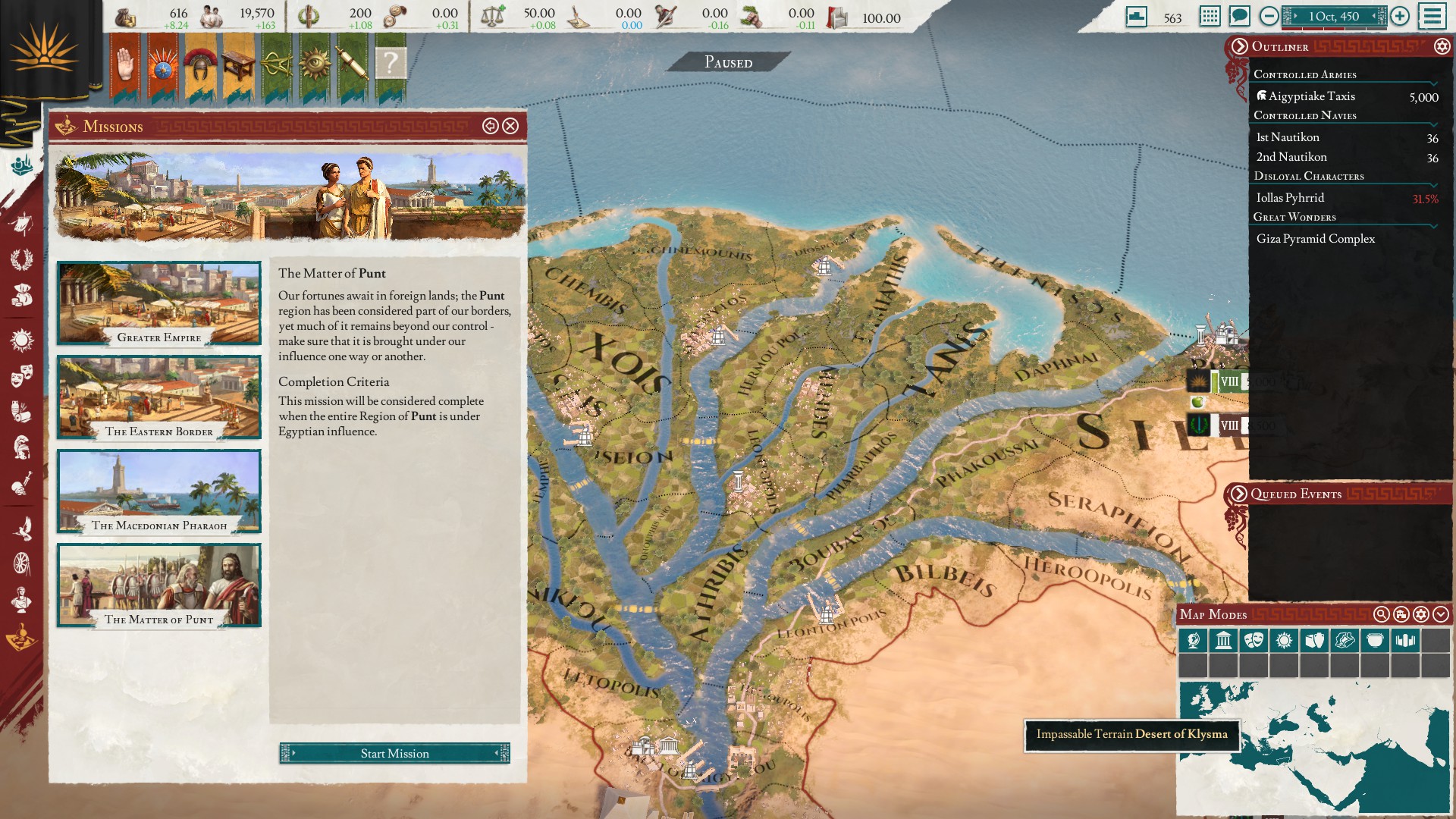
Something that the new mission trees have over even the ones that most existing nations has, including Rome, is options right from the get go. You don’t just get one tree per nation, you get several, though the exact number varies. So you can chose what you want to focus on. As Egypt do you want a mission tree that encourages you to push east or west? And once you’ve completed one tree you can switch to another. These mission trees are also not trivial to complete, though they’re generally speaking not quite as difficult as the mission trees that Paradox has made for some other games.
There’s also new events for these nations, and it’s hard to tell what’s new and what’s old. That’s a good thing, after all if you can’t tell if an event was made for this DLC or was something that already existed in game that means that they’ve managed to integrate it pretty well with the game. But more events do seem to pop up than for other nations, and they add a bit of flavour and some more choices to make.
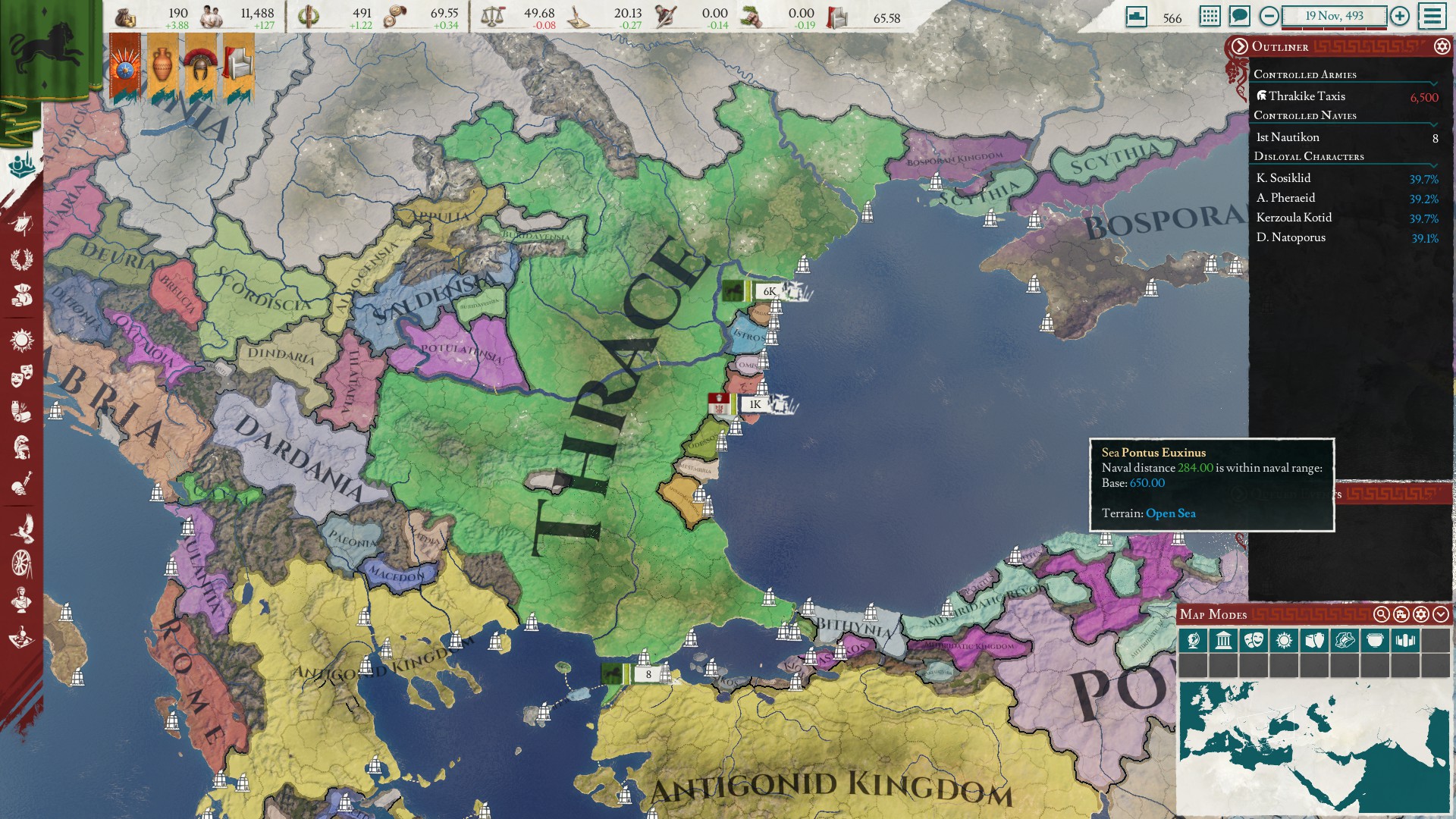
Wonders of the World
Apart from the missions and events, the other big selling point of this DLC is the wonder designer. Wonders are buildings that you can build in your territory that give a substantial bonus. These are customizable, both in terms of looks and effects. Want to build a massive tower made out of wood and marble? Sure, you can. Different materials give different amounts of prestige and has different costs associated with them.
Apart from designing the looks of the wonder, you can also attach different passive effects to them, like higher tax income or improved diplomatic relationships. Each wonder can have three effects attached to them that will give a passive boost once the wonder is built.
Building these wonders is fittingly enough quite an undertaking. They’re so expensive than only an already very big nation will have a realistic chance of building them. You also need to make sure that you have the building materials for your wonder, and if you for some reason lose access to a necessary resource construction will be halted.
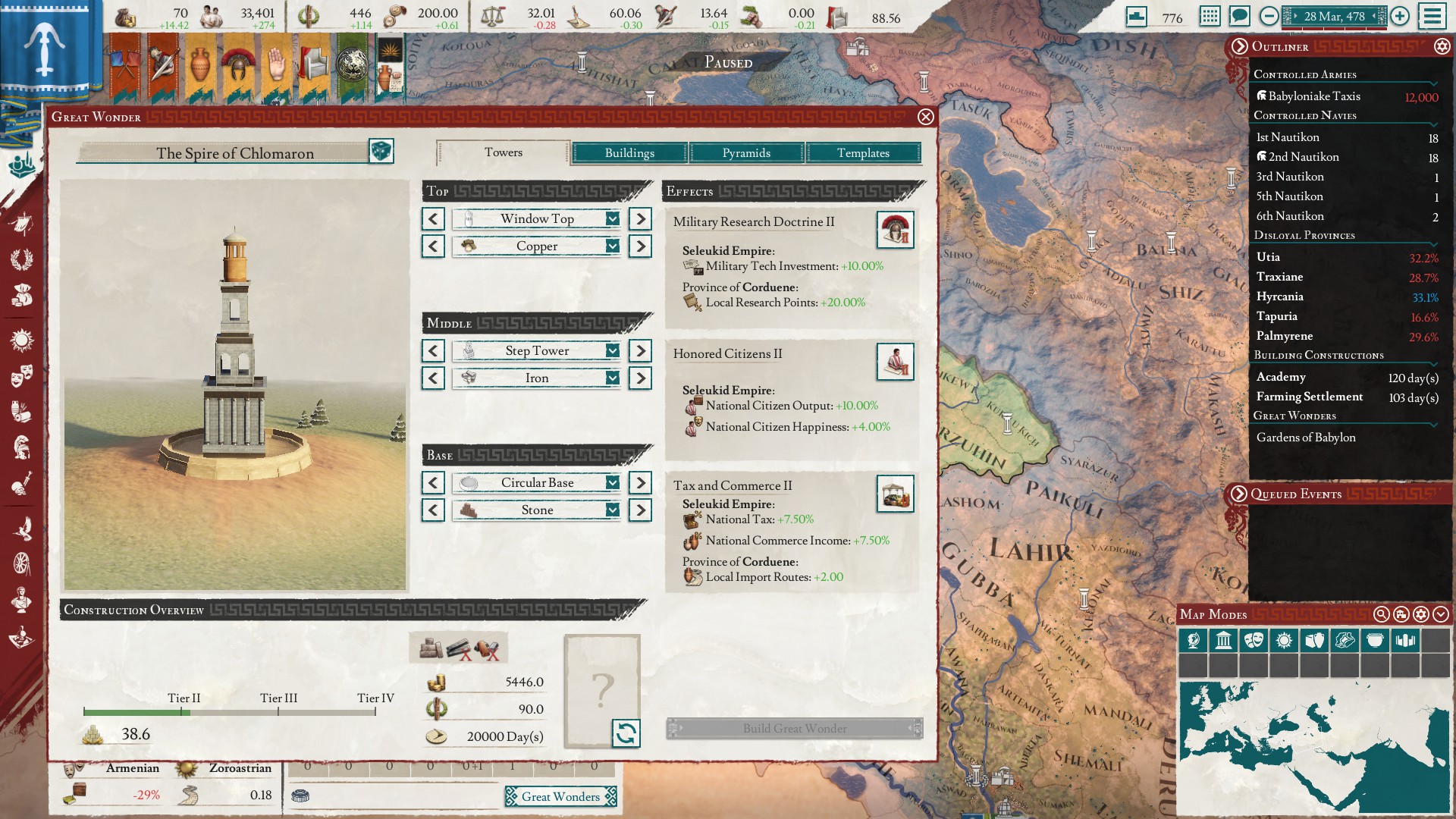
Patch 2.0 – the Marius Update
While this is not a review for this patch, the patch is still a significant update for the game and some of the changes end up making the nations covered by the DLC more interesting to play.
The most noticeable change with the patch is the new interface. Instead of having everything at the top of the screen many of the important menus are accessed from a bar on the left side. This might not seem particularly significant, but the new UI is quite a bit easier to work with than the old one. Pretty much all the important things are easy to find.
Research has been greatly improved. You now get points to spend in some rather substantial research trees. Research is no longer something that just passively happens, you’ve got to make active choices for how to improve your nation.
The military system has also seen an overhaul. You now have standing legions as well as levies that can be raised, giving a somewhat more realistic feel to how armies work. The terrain in the province you’re fighting in now matters, particularly as armies grow in size. This also gives smaller nations a chance to fend off larger ones through clever use of terrain.
There’s other changes as well, like how buildings impact the civilization level of a province and a lot of balance changes, but these are the biggest changes.
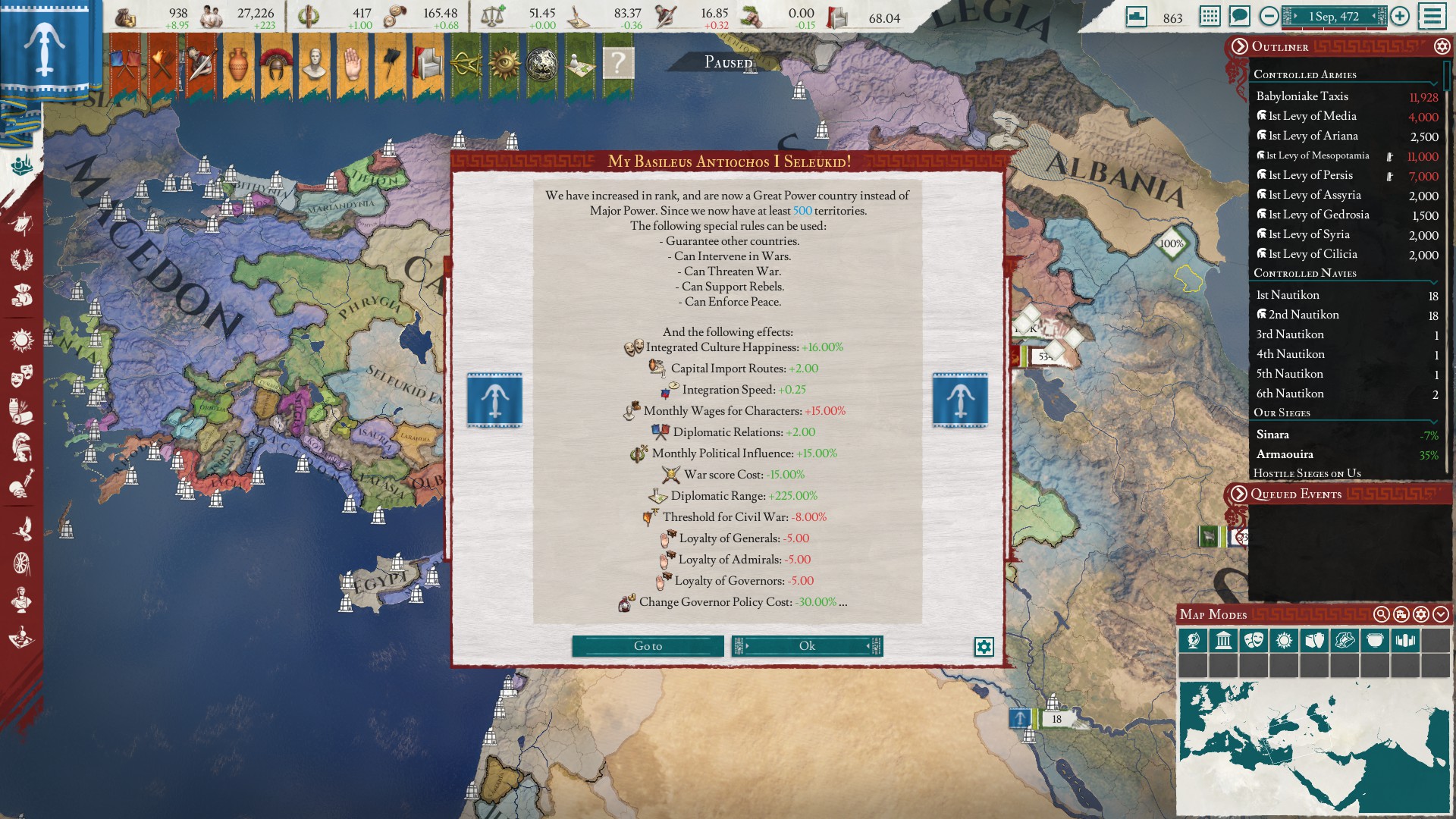
Closing Thoughts
The content/immersion packs for Paradox titles can be a bit hit or miss. Usually what they add can be so specific that they’re only really worth it if you love to play a certain nation. Heirs of Alexander is not really an exception here, apart from the fact that it’s not quite as narrow as they usually are. The area it covers is a substantial part of the map, and it includes several major kingdoms/empires, most notably probably being Macedon and Egypt. If you play a lot of Imperator: Rome you’re likely to try at least one of these nations at some point, and if you do Heirs of Alexander adds a lot to the experience. The wonder designer is also a nice, though it’s not worth getting Hers of Alexander just for that. It’s a nice little extra, but it does not have a big impact on how the game is played.










